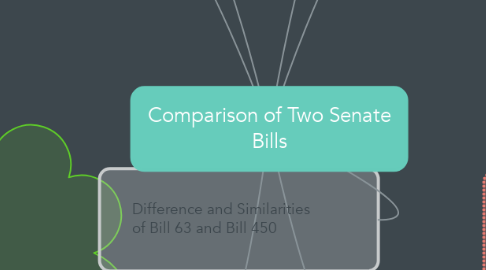Comparison of Two Senate Bills
by Melinda Houston

1. Key points
1.1. Each hospital must monitor and implement a professional nurse staffing plan which must be approved by 66% of the committee Must establish a staffing committee made up of both bedside and administrative nurses and CNO must receive reports from the committee. Nurses cannot be penalized for voicing their opinions as a member or the committee Staffing plan must reflect similarly to other nursing organizations Bedside nurses are elected by peers, administrative nurses by board of directors or president Patients can request the staffing plan Nurses who refuse an assignment are not in violation of professional laws or regulations Penalty if not in compliance with completing forms of 1,000 per day Must have special account for The Safe Staffing Penalty Account and to be used to carry out required duties Confidentiality must be assured of any reports made under the Preventable Serious Adverse Events Act The annual report will not be included in any lawsuits
2. Bill 63: Safe Staffing
3. DIFFERENCES
3.1. Bill 450 address unlicensed staff-bill 63 only address licensed staff
3.2. No mention of a “Skilled Nursing facility” in bill 63
3.3. Bill 450 goes into greater detail explaining various types of hospital units
3.4. Bill 450 address Hospital nursing practice standard-bill 63 does not
3.5. Bill 450 address doctor orders bill 63 does not
3.6. Bill 450 is more detailed on the patient’s right to file complaints
3.7. Bill 450 addresses specific areas and what staffing minimums should be
3.8. Addresses that video monitor should not be used in place of a professional nurse
3.9. Bill 450 states that an unlicensed person may not perform duties of those of a licensed nurse
3.10. Bill 450 says no mandatory overtime for staffing ratios
3.11. Bill 450 mentions fines associated with violations up to 25, 000 for each violation
3.12. Bill 450 addresses rights of violated employees who must be reinstated
3.13. Bill 450 states the provisions of this bill must be posted
4. Difference and Similarities of Bill 63 and Bill 450
5. Key Points
5.1. Direct care nurse us able to decline an assignment without being deemed as patient neglect of abandonment. Nurse is able to assess that physician orders are in the best interest of their patient Patient advocacy by the nurse should be free from retaliation A nurse who reports unsafe practice will not be retaliated against for whistleblowing CNO will compose the nurse to patient ratio based on acuity-based patient classification system Transparency in staffing ratios should be published for the public to see on each unit
6. Bill 450: Hospital Patient Protection
7. SIMILARITIES
7.1. Both address the need for qualified professional nurses
7.2. Both address the need for safe staffing ratios
7.3. Both address financial needs
7.4. Both address retaliation
7.5. Bill 450 goes into more detail with care requirements such as equipment
7.6. Both define professional nurse the same
7.7. Both detail definitions of hospital unit, long term care hospital, and hospital the same
7.8. Both address the nurse’s ability to refuse an assignment
7.9. Both address the professional nurse as the patient advocate
7.10. Both state the staffing plan should be completed by the Chief Nursing officer of designee
7.11. Both state about staffing record keeping for a period of 2 years
7.12. Both address the patient right to medical records and care provided
7.13. Both address administrative and bedside nurses on the staffing committee and how they are appointe


